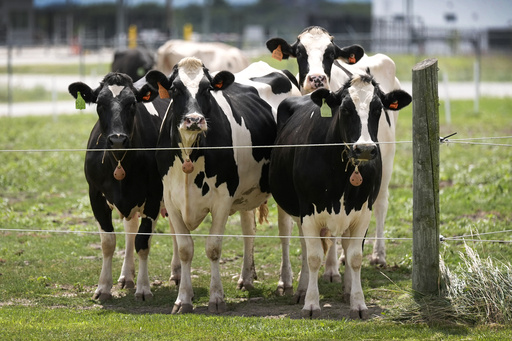Dairy cows in Nevada have been found to carry a new strain of bird flu distinct from the variant that has been impacting livestock across the United States since last year, according to officials from the Agriculture Department. This discovery suggests that different forms of the Type A H5N1 virus have transferred from wild birds to cattle on at least two separate occasions. Experts are concerned as this raises new issues regarding the potential for wider transmission and the challenges of managing infections in animals and humans who interact with them closely.
Richard Webby, an influenza specialist at St. Jude Children’s Research Hospital, stated, “Initially, I considered bird-to-cow transmission to be a rare occurrence. However, this situation indicates it may not be as uncommon as once thought.”
Scientists confirmed that a specific version of the H5N1 virus, designated as B3.13, had been introduced to cattle in late 2023, with its presence verified in March. This strain has affected over 950 herds across 16 states. The newly identified variant, referred to as D1.1, was detected in Nevada cattle on a recent Friday and was discovered during milk sampling as part of a surveillance initiative kicked off in December.
Angela Rasmussen, a virology expert from the University of Saskatchewan who was involved in identifying the initial spillover, emphasized the importance of ongoing testing, stating, “This underscores why regular testing is crucial.”
The D1.1 variant is linked to the first known H5N1-related death in the United States, as well as a serious case in Canada. A Louisiana resident died in January after showing severe respiratory symptoms post-contact with both wild and domestic birds, while a teenage girl in British Columbia faced extensive hospitalization due to a virus traceable to poultry.
The U.S. Centers for Disease Control and Prevention report that at least 67 individuals have contracted bird flu domestically, primarily among those who handle dairy or cattle regularly.
USDA officials have announced that they will make the genetic sequences and additional details regarding this novel virus strain accessible to the public in the coming week. Scientists believe this information will be crucial in determining if the spillover was a recent incident or if the virus has been circulating, possibly at high levels, for an extended period.
Michael Worobey, an evolutionary biologist at the University of Arizona studying the H5N1 virus among cattle, remarked, “If it turns out that this strain crossed over into cattle a few months ago, then not detecting it for that length of time is significant.”
He also stressed the importance of prompt information sharing by federal authorities about a virus that has pandemic potential, warning that it could be “far more severe than the COVID-19 outbreak.”
Worobey concluded by stating, “This is a crucial element of national and global security, along with the health of people, animals, and the U.S. economy.”
